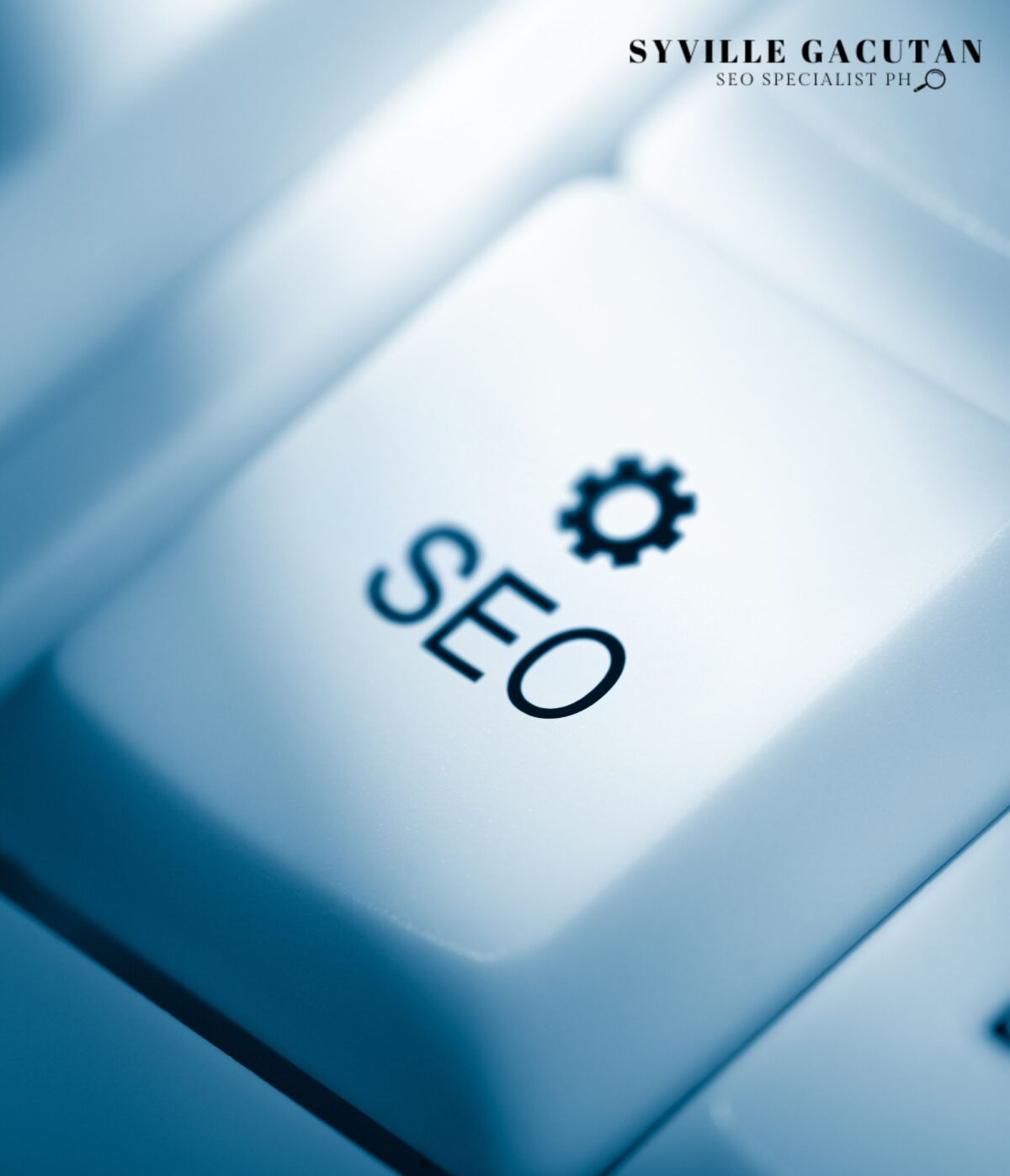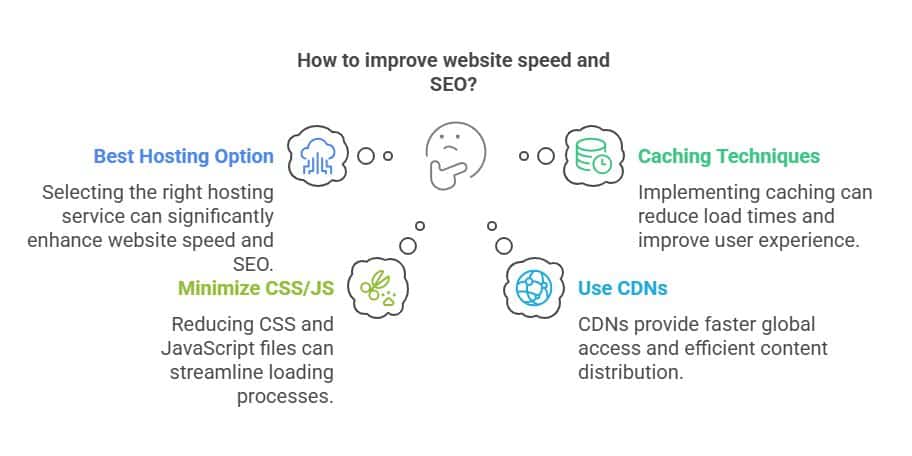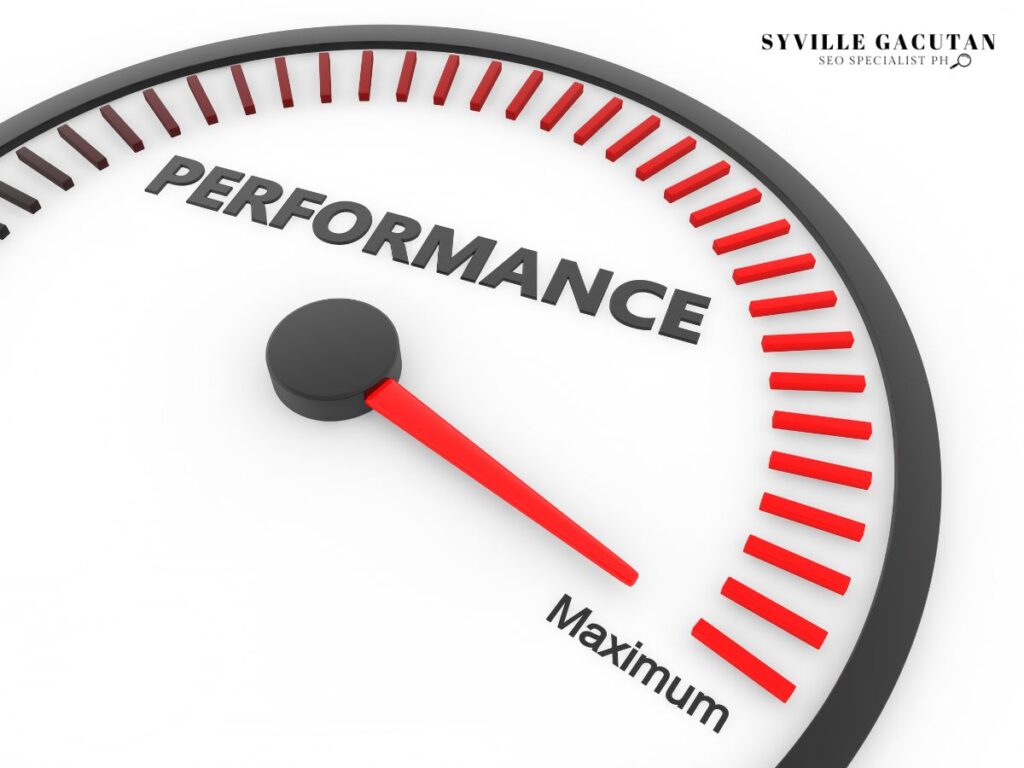
Optimize Your Website Speed for Better SEO Rankings
Improving the speed of your website is essential for raising user satisfaction and SEO rankings. Fast-loading websites not only keep bounce rates low and conversion rates high but also align with Google’s search algorithms, which prioritize speed. To optimize, start by analyzing current site performance using tools like Google PageSpeed Insights. Select an appropriate hosting solution, and implement caching and CDNs for efficient content delivery. Minimize and defer CSS and JavaScript files to reduce load times, and consider AMP for mobile optimization. Reducing server response time through server configuration and image compression is key. There’s more to explore and know further how to improve site speed for SEO.
Key Takeaways
- Choose the best hosting option to improve website speed and have a favorable SEO impact.
- To speed up load times and enhance user experience, consider caching techniques.
- Reduce the amount of CSS and JavaScript to improve website speed and load times.
- Use CDNs for quicker worldwide access and effective content distribution.
- For quicker mobile page loading and higher mobile SEO ranks, use AMP.

Importance of Website Speed

A website’s user experience and search engine rankings are greatly impacted by its speed, making it an essential component of any successful online presence. A quick-loading website is becoming essential rather than a luxury due to the growing focus on effective digital interactions. User engagement is greatly impacted by website speed; a slow site can turn off visitors, increasing bounce rates and decreasing conversion rates. Since they have a direct impact on a company’s bottom line, these metrics are crucial.
In the current digital landscape, mobile optimization is equally crucial. As more users access websites via mobile devices, ensuring that these platforms load swiftly is paramount. A poor mobile experience can drastically affect user engagement, resulting in lost opportunities and revenue. Furthermore, search engines like Google have incorporated page speed into their search algorithms, meaning slower sites may suffer in search rankings. This direct link between website speed and search visibility underscores the importance of investing in speed optimization to enhance overall SEO performance.
The importance of website speed extends beyond just search algorithms and conversion rates; it is fundamentally about retaining users and ensuring they have a seamless experience. A fast website fosters trust and encourages users to explore more, increasing the likelihood of achieving desired actions such as purchases or inquiries. In conclusion, prioritizing website speed is not merely a technical concern but a strategic business decision that can lead to improved user experience, higher conversion rates, and better search engine rankings, ultimately driving long-term success in the digital realm.
Analyzing Current Site Performance

Evaluating the performance of a website is a fundamental step in optimizing its speed and overall efficiency. Understanding how your site performs is crucial for delivering a seamless user experience, which directly influences your SEO rankings. The primary focus should be on key performance metrics such as load time, which measures how quickly your web pages are fully displayed. A fast load time enhances user satisfaction and reduces bounce rates, making it a critical factor in maintaining optimal site performance.
To accurately analyze your site’s current performance, tools like Google PageSpeed Insights, GTmetrix, or Pingdom can be employed. These tools provide comprehensive reports on various performance metrics, offering insights into areas needing improvement. For instance, they can highlight issues with browser caching, which involves storing static resources in a user’s browser to expedite subsequent page loads. Properly configured browser caching can significantly decrease load times, thereby enhancing user experience.
Another aspect to consider is content delivery, especially for websites with global audiences. Utilizing a Content Delivery Network (CDN) can optimize the distribution of your site’s content across various geographical locations. By caching content closer to the user’s location, CDNs help reduce latency, thus improving load times.
Choosing the Right Hosting

Selecting the right hosting provider is a pivotal decision that can significantly impact your website’s speed and SEO performance. With numerous hosting options available, understanding the nuances of each can guide you toward an optimal choice that aligns with your specific needs. Shared hosting, for instance, is a cost-effective solution for smaller websites or startups, but it can lead to slower load times due to resource sharing with other sites on the same server. This can adversely affect your SEO rankings as search engines prioritize speed.
For those requiring more robust performance, dedicated servers offer exclusive resources, ensuring faster processing and greater control over server configurations. This option is particularly beneficial for high-traffic websites that demand reliability and speed. However, it often comes with higher costs and requires technical expertise to manage effectively.
Cloud hosting presents a flexible alternative, providing scalability and redundancy by distributing resources across multiple servers. This setup can enhance website speed and availability, making it an attractive option for businesses anticipating variable traffic levels. Moreover, cloud hosting can be combined with managed hosting services, where the provider handles server maintenance, updates, and security, allowing you to focus on your core business operations.
Performance monitoring is essential regardless of the hosting type chosen. Regularly analyzing server performance and load times can help identify bottlenecks and ensure optimal operation. Tools offering real-time monitoring can provide valuable insights, enabling proactive adjustments and sustained SEO performance. By carefully evaluating these hosting options, you can make informed decisions that enhance website speed and improve overall SEO outcomes.
Reducing Server Response Time
Although server response time is just one of many factors influencing website speed, it is a crucial element that can significantly affect user experience and SEO performance. A slow server response can lead to increased bounce rates and diminished search engine rankings. To enhance server response time, several strategies should be considered.
Firstly, efficient server configuration is vital. This involves ensuring that the server is optimized for handling requests swiftly. Updating software, using a reliable web server, and employing a high-performance hardware setup can collectively reduce delays. Caching strategies are another powerful tool. By storing frequently accessed data in a temporary storage layer, caching reduces the need to repeatedly fetch the same resources, thereby accelerating content delivery.
Database optimization is also essential. As websites grow, databases can become cluttered with redundant data, leading to sluggish response times. Regularly cleaning up databases and optimizing queries can significantly enhance performance. Moreover, incorporating a Content Delivery Network (CDN) can dramatically improve server response times. CDNs distribute content across multiple locations worldwide, ensuring users receive data from the closest server, thus reducing latency.
Image compression is another effective method to decrease server load and improve response times. By reducing the file size of images without compromising quality, less bandwidth is consumed, resulting in faster delivery. Implementing these strategies collectively can lead to a notable improvement in server response times, ultimately enhancing both user satisfaction and search engine visibility. By prioritizing these elements, businesses can ensure their websites remain competitive in the ever-evolving digital landscape.
Minimizing CSS and JavaScript
When it comes to optimizing website speed, minimizing CSS and JavaScript is a critical step that can lead to substantial improvements in load times. These optimizations not only enhance user experience but also contribute to better SEO rankings. To achieve this, several approaches can be employed, each addressing different aspects of CSS and JavaScript management.
A significant technique involves CSS minification techniques, which reduce file sizes by eliminating unnecessary characters, such as whitespace and comments, without affecting functionality. This streamlining decreases the time it takes for browsers to download and read CSS files.
JavaScript bundling strategies are also essential in optimizing website performance. By combining multiple JavaScript files into a single file, you reduce the number of HTTP requests made to the server, thereby speeding up page load times.
Leveraging browser caching is another effective strategy. By setting appropriate cache headers, browsers can store CSS and JavaScript files locally, reducing the need to download them again on subsequent visits and thus speeding up load times.
Optimizing delivery methods involves asynchronously loading scripts that are not critical for the initial page render. This ensures that essential content is displayed without delay while additional scripts load in the background.
To further optimize, consider removing unused code from your CSS and JavaScript files. This not only reduces file size but also minimizes potential points of failure and enhances maintainability.
Implementing Accelerated Mobile Pages

Enhancing website speed through CSS and JavaScript optimization lays a strong foundation, yet for a truly responsive mobile experience, implementing Accelerated Mobile Pages (AMP) is highly beneficial. AMP is an open-source framework designed to create fast-loading web pages, which is crucial for improving user experience and boosting SEO rankings. The AMP benefits are significant, as they enhance page speed, reduce bounce rates, and potentially increase conversions by delivering content almost instantaneously to mobile users.
The process of AMP implementation involves creating a simplified version of your web pages using AMP HTML, a subset of standard HTML with custom tags and properties. This ensures that the pages are lightweight and can be served swiftly. Furthermore, AMP design focuses on optimizing content layout, ensuring images, videos, and ads load efficiently without compromising the user experience. This streamlined approach not only improves speed but also aligns with Google’s mobile-first indexing strategy, giving AMP-enabled pages a competitive edge in search results.
However, AMP challenges should not be overlooked. The restricted nature of AMP HTML means that some interactive elements or complex functionalities may not be supported, requiring web developers to find creative solutions to maintain functionality. Additionally, AMP analytics can be more complicated, as tracking may require specific configurations to ensure accurate data collection on user interactions and page performance.
Final Thoughts
Optimizing your website’s speed is essential for boosting SEO rankings and enhancing user experience. By choosing the right hosting provider, minimizing CSS and JavaScript, reducing server response times, and leveraging techniques like caching, CDNs, and AMP, you can significantly improve your site’s load times. These optimizations not only reduce bounce rates but also align with search engine priorities, ensuring better visibility and engagement.
Ready to supercharge your website’s speed and SEO performance? Connect with Syville Gacutan, an experienced SEO Specialist in the Philippines. Syville can help you implement advanced speed optimization strategies, ensuring your website loads faster, ranks higher, and delivers an exceptional user experience. Don’t let slow site speed hold you back—reach out to Syville today and transform your website’s performance.